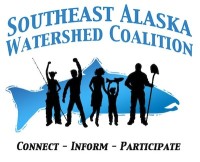
Haines Wetland Program Underway With Local Advisory Committee Meeting
On February 28th, the Southeast Alaska Watershed Coalition’s Aquatic Resource Mitigation Coordinator will facilitate a meeting in Haines to discuss community wetlands identification and planning with a local advisory committee. The meeting is hosted by the Chilkoot Indian Association and is part of a tribal initiative to develop a public education tool that will inform the public and developers on the presence and value of wetlands in Haines. The CIA and SAWC have invited Teri Camery, a senior planner and wetland review board lead for the City and Borough of Juneau, to present at the meeting and share with participants the experience of the CBJ in mapping and assessing wetlands in their community. SAWC works to support local governments and tribes to play an active role informing natural resource management…

